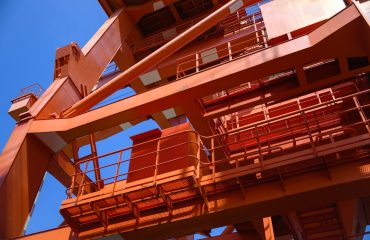The construction industry is undergoing a significant transformation, driven by the need for faster, more efficient, and sustainable building solutions. Prefabricated steel structures are at the forefront of this revolution, offering a compelling alternative to traditional construction methods. This comprehensive guide delves into the world of prefabricated steel, exploring its benefits, applications, and the future of this innovative approach.
The Advantages of Prefabricated Steel Structures
Prefabricated steel structures boast a multitude of advantages that make them an attractive choice for a wide range of projects. These advantages span the entire lifecycle of a building, from design and construction to maintenance and eventual dismantling. Let’s explore some key benefits:
- Speed and Efficiency: Prefabrication significantly reduces construction time. Components are manufactured off-site in a controlled environment, minimizing delays caused by weather or labor shortages. This translates to faster project completion and quicker return on investment.
- Cost-Effectiveness: While initial material costs might seem higher, the overall cost-effectiveness of prefabricated steel structures is undeniable. Reduced labor costs, faster construction timelines, and minimized waste contribute to significant savings.
- Durability and Strength: Steel is inherently strong and durable, resisting fire, pests, and harsh weather conditions better than many other materials. This longevity translates to lower maintenance costs and a longer lifespan for the structure.
- Sustainability: Steel is a highly recyclable material, making prefabricated steel structures environmentally friendly. The controlled manufacturing process also minimizes waste compared to traditional construction methods.
- Design Flexibility: Prefabricated steel structures offer incredible design flexibility. They can be customized to meet specific requirements, accommodating various architectural styles and functional needs.
Applications of Prefabricated Steel Structures
The versatility of prefabricated steel structures makes them suitable for a diverse range of applications. Their strength, durability, and speed of construction make them ideal for:
- Commercial Buildings: Warehouses, retail spaces, offices, and industrial facilities benefit from the efficiency and cost-effectiveness of prefabricated steel.
- Residential Buildings: From single-family homes to multi-story apartment complexes, prefabricated steel offers a sustainable and efficient solution for residential construction.
- Agricultural Structures: Barns, sheds, and other agricultural buildings can be quickly and cost-effectively constructed using prefabricated steel.
- Infrastructure Projects: Bridges, overpasses, and other infrastructure components can be prefabricated off-site, reducing disruption and speeding up project completion.
- Special Purpose Buildings: Prefabricated steel is ideal for structures requiring specific design features, such as high-bay warehouses or structures with large spans.
Design Considerations for Prefabricated Steel Structures
Designing prefabricated steel structures requires careful planning and consideration of several key factors:
- Structural Engineering: Precise calculations are crucial to ensure the structural integrity and stability of the building. Experienced engineers are essential for this phase.
- Modular Design: The design needs to be modular, allowing for efficient prefabrication and assembly of components off-site.
- Transportation and Logistics: The size and weight of prefabricated components must be carefully considered to ensure efficient transportation and on-site handling.
- Connections and Assembly: The design of connections between prefabricated components is critical for ensuring structural stability and ease of assembly.
- Building Codes and Regulations: The design must comply with all relevant building codes and regulations to ensure safety and legal compliance.
The Construction Process of Prefabricated Steel Structures
The construction process for prefabricated steel structures differs significantly from traditional methods. It involves several key stages:
- Design and Engineering: Detailed design and engineering plans are created, considering all aspects of the structure.
- Off-site Fabrication: Steel components are fabricated in a controlled factory environment, ensuring precision and quality control.
- Transportation: Prefabricated components are transported to the construction site.
- On-site Assembly: Components are assembled on-site, typically using cranes and other heavy machinery.
- Finishing and Cladding: Final finishing work, including cladding and interior fit-out, is completed.
The Future of Prefabricated Steel Structures
The future of prefabricated steel structures is bright. Ongoing technological advancements are driving further improvements in design, manufacturing, and construction techniques. We can expect to see:
- Increased Automation: Automation will play a larger role in the fabrication process, further improving efficiency and reducing costs.
- Advanced Materials: The use of advanced steel alloys and composite materials will enhance the performance and durability of prefabricated structures.
- Sustainable Practices: Prefabrication will continue to be a key driver of sustainable building practices, reducing waste and minimizing environmental impact.
- Integration of Smart Technology: Smart building technologies will be increasingly integrated into prefabricated steel structures, enhancing energy efficiency and occupant comfort.
- Modular Design Innovations: Further innovations in modular design will allow for even greater customization and flexibility in prefabricated steel construction.
In conclusion, prefabricated steel structures represent a significant advancement in construction technology, offering a compelling combination of speed, efficiency, cost-effectiveness, and sustainability. Their versatility and adaptability make them suitable for a wide range of applications, ensuring their continued growth and prominence in the future of building.




